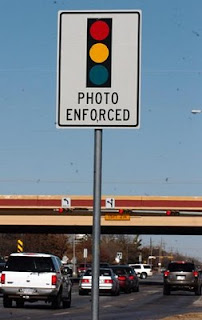
The duration of yellow traffic lights plays a crucial role in road safety. Unfortunately, many intersections across the country have yellow lights that last less than the recommended time, often under 3.5 seconds. This can lead to dangerous situations, including increased rear-end collisions and risky decision-making by drivers. In this article, we’ll explore the importance of yellow light duration, the impact of short yellow lights on road safety, and how you can join the campaign to identify and report these hazardous intersections.
Understanding Yellow Light Duration
What Is the Purpose of a Yellow Light?
The primary purpose of a yellow traffic light is to alert drivers that the light is about to change to red, signaling them to slow down and prepare to stop. A well-timed yellow light allows enough time for vehicles to safely navigate the intersection, whether they are stopping or proceeding through.
Recommended Duration
Traffic safety experts generally recommend that yellow lights last between 3.5 and 5 seconds, depending on the speed limit of the road. This duration accounts for:
-
Vehicle Stopping Distance: Higher speeds require longer stopping distances. A longer yellow light provides drivers with enough time to stop safely.
-
Driver Reaction Time: Drivers need a few seconds to react to changing lights. Shorter durations can lead to hurried decisions, increasing the likelihood of accidents.
The Dangers of Short Yellow Lights
When yellow lights last less than the recommended time, several risks arise:
1. Increased Accidents
Research indicates that shorter yellow light durations are associated with higher accident rates, particularly rear-end collisions. Drivers may not have sufficient time to stop safely, leading to dangerous situations at intersections.
2. Aggressive Driving Behavior
Drivers may feel pressured to speed through intersections when they perceive yellow lights as being too short. This aggressive behavior can result in risky maneuvers and further compromise road safety.
3. Pedestrian Safety Risks
Short yellow lights not only endanger drivers but also pedestrians. When vehicles rush through intersections, pedestrians may be caught in dangerous situations, especially if they are attempting to cross when the light changes.
Join the Campaign: Help Us Find Short Yellow Lights
To combat the dangers posed by short yellow lights, we are launching a campaign to identify intersections with yellow light durations under 3.5 seconds. Here’s how you can get involved:
1. Document Your Findings
If you notice yellow lights that seem unusually short, take note of the location, time, and duration of the yellow light. Using a stopwatch or your smartphone’s timer can help you accurately measure the light duration.
2. Report to Local Authorities
Once you have documented short yellow lights, report your findings to local traffic authorities. Many cities have online forms or contact information for reporting traffic safety concerns.
3. Spread the Word
Share your experiences and encourage others to participate in the campaign. The more people who get involved, the greater the chance of making a significant impact on traffic safety in your community.
4. Advocate for Change
Engage with local advocacy groups focused on traffic safety. Attend city council meetings and express your concerns about short yellow light durations. Your voice matters in driving change.
Are there laws making yellow lights standard?
Conclusion
Short yellow lights under 3.5 seconds pose a serious threat to road safety, leading to increased accidents and heightened risks for both drivers and pedestrians. By joining the campaign to identify these hazardous intersections, you can contribute to a collective effort to promote safer roads in your community. Together, we can work towards ensuring that yellow lights provide adequate warning and that all drivers have the time they need to make safe decisions at intersections. Stay vigilant, document your findings, and let’s create a safer driving environment for everyone!
Here are some examples
Do you feel like you drove through a light with an extra short yellow? Did you know there are laws and DOT recommendations that require yellow lights to be at least 3.5 seconds? Six cities have already been caught shortening yellow lights by .3 to 1 seconds. 6 cities have been caught: 1) Dallas, Texas 2) Chattanooga, Tennessee 3) Springfield, Missouri 4) Lubbock, Texas 5) Nashville, Tennessee 6) Union City, California.
I would suspect there are many other cities in violation, including a city near me Culver City. I would love to get some user input if they think their city has a short yellow light. Time the light the next time you are waiting at a stoplight and post it here under comments. Thanks in advance for your help!


